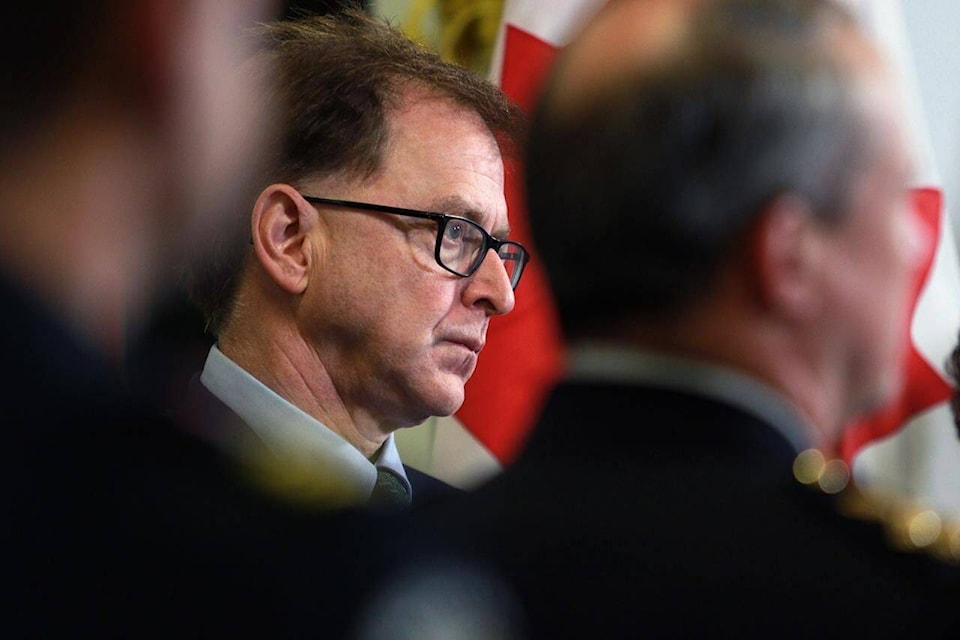B.C.’s health minister said the province has been able to connect nearly 600 family physicians with thousands of new patients through its health registry system
Health Minister Adrian Dix provided an update on primary healthcare in the province during a news conference in Vancouver Friday (Feb. 9). The update comes as B.C. prepares to mark the one-year-anniversary of the new pay model for doctors. Dix said more than 80 per cent of family physicians in the province have signed up for the payment model.
Doctors, who had previously chosen not practice family medicine, are now doing so, he said.
The overall number of doctors practicing “longitudinal family practice,” which Dix described as a “fancy way of saying they are taking patients,” has gone from 4,289 in December 2022 to 4,997 in December 2023, an increase of 16.5 per cent from December 2022. Dix also added that the number of nurse practitioners working in primary care up has gone up by 11.3 per cent to 590.
“So all of that is extremely positive,” Dix said.
READ MORE: New registry to find family doctors, other primary care open in B.C.
READ MORE: 1,000 eligible doctors have signed up for B.C.’s new payment model, which starts today: Dix
Dr. Ahmer Karimuddin, president of Doctors of B.C., said the changes in the past year have allowed new doctors to start up or return to family practices. Some have even delayed retirement.
Karimuddin said the first year of the new payment model has seen real progress, but also acknowledged “still a lot to do.”
This comment can be read as a reference to B.C.’s growing population and the fact that hundreds of thousands of British Columbia currently lack to a family doctor. Popular accounts often peg the number at 1 million or 1 in 5 British Columbians, but figures from the Ministry of Health, citing the Canadian Community Health Survey, put the figure at just under 900,000 in 2022.
“Not all those people are seeking a family doctor, but a significant number are and you can tell that by their response to the Health Connect Registry,” he said.
The provincial government bills the registry as the first comprehensive registry connecting family physicians as well as nurses to patients.
Government introduced the system as part of the new payment model and Dix said more than 4,000 physicians have uploaded data as of Jan. 31,
The province had asked most doctors to upload data by Dec. 31 and the rest by March 31. That data covered more than 3.8 million unique patients. Dix added the data has allowed 594 health-care providers to accept 114,000 new patients.
But he added that the province doesn’t “attach” thousands of patients at a time, but rather one at a time. It’s a “slow process in some ways,” but it’s meant to be individualized.
READ MORE: B.C. more than doubles number of foreign nurse registrations this year
READ MORE: Dix says foreign doctors giving B.C. family practice a booster shot
Available figures point to growing demand. Dix said he expects another 200,000 people to join the provincial health care system as B.C. continues to grow.
That is a “very significant” demand on the system, Dix said, having said earlier that B.C.’s population is not growing, and also aging. “So we have to continue to do the work,” Dix said. “So it would be my expectation that there would be more doctors next year than this year. So it’s a system where you have got to continue to add doctors.”
Dix pointed to the on-going recruitment of internationally-trained doctors, the creation of a new medical school at Simon Fraser University and the expansion of the existing medical school at the University of British Columbia.
He added that 80 per cent of doctors trained at UBC stay in-province with seven per cent going to Alberta. “People move in our country, it’s an open jurisdiction,” he said. “But what that tells you is that increasingly doctors want to practice in B.C., partly because of this payment model, partly because of the collaborative model in every area (supporting medical professionals).”



